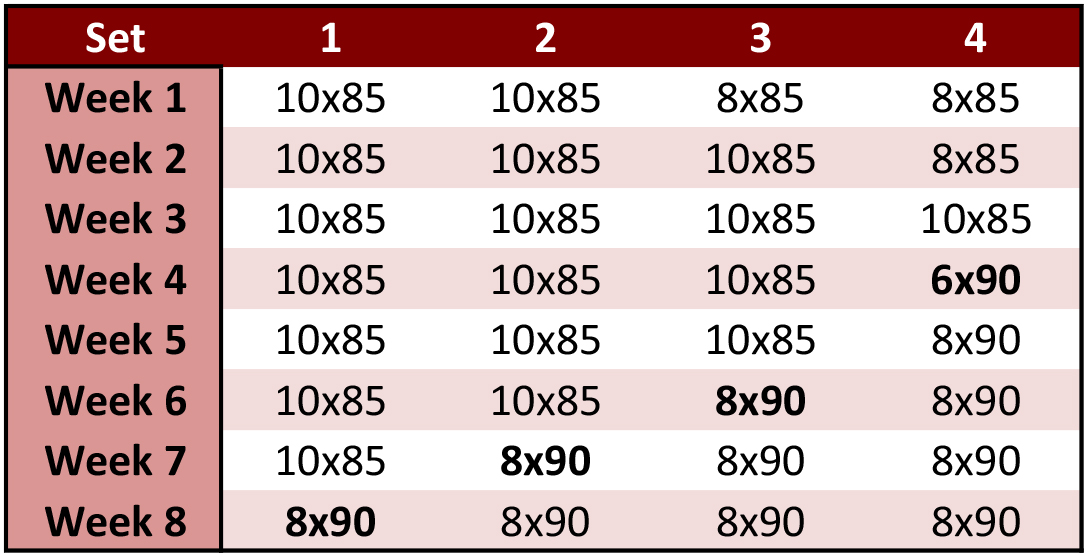
In simple terms, it means that you are progressively pushing your body and muscles a bit further with each workout you do. HOW you do that varies, and there’s not really a wrong way to do it. Basically, every time you walk into the gym, you want to try to beat what you did the last time.
Why Progressive Overload?
So then the questions becomes, why? Progressive overload is not only the best way to get stronger, but it is also the best way to sculpt your physique. By increasing your strength, your muscles have no choice but to grow. Before you get scared thinking that you’re going to end up with big, bulky muscles just by utilizing this method, let me stop you and be frank: you’re not that special.
Building muscle is VERY difficult. If it were easy, we’d all be walking around looking like the Hulk.
The truth is that there is a very small percentage of people who do gain muscle easily, but you’ll know if you’re one of them because you likely have had big muscles since birth, without ever touching a weight.
If that’s NOT you, you’re like most of us and will have to work hard to build muscle. In addition, building muscle doesn’t mean you’ll build size, necessarily. If you’re increasing your strength and building muscle, but also losing fat, you will likely look smaller as you increase your muscle mass.
Finally, if at any point you feel that your muscles have just gotten too big, you can always lay off the weights. But you won’t wake up one day with green skin and giant biceps, ok? We promise.
Now, let’s see how we can utilize Progressive Overload:
Using any exercise:
- Do the same # of reps as last week, but add more weight
- Use the same weight as last week, but do more reps
- Shorten your rest periods
- Increase your range of motion
- Perform the exercise after you’ve already done another exercise and try to match your weight/reps from last week when you did that exercise first
As you can see, there are many ways for you to progress. The important thing is that you strive to progress each time you walk into the gym.
For Example:
If you Deadlifted 135lbs for 3 sets of 5 reps with 3 minutes of rest between each set last week, this week you could try:
- 145lbs for 3 sets of 5 reps
- 135lbs for 3 sets and you’ll get 8 reps on your first set (an increase of 3 reps from last week
- 135lbs for 3 sets of 5 reps, but you’ll rest for only 2 minutes between sets instead of 3 minutes
Please also be aware that if you’re new to lifting, you will likely see large and frequent increases in strength initially. We call this “newbie gains”. Over time, this will diminish and you’ll have many weeks were you don’t progress at all. In fact, you may even have weeks where you regress, but that’s typically due to outside factors, such as your body being tired, not getting enough sleep, nutrition, etc. Strength is NOT linear, so your strength chart will likely look like a heart rate monitor. However, if you look at the big picture, if you’re training properly, there will be an upwards trend. This is why good programming is important and having a great personal trainer can be very impactful in this.
Here is a more in depth look at how to use Progressive Overload by IRON Personal Trainer, Sean Dube:
Using a rep range.
I really like using rep ranges in my programming because it’s a very easy way to implement progressive overload. Using a rep range helps make sure that you’re ready for an increase in weight by making sure you’ve been performing adequate volume with a given load before moving on. This serves as the basic template for which other methods of progressive overload trickery can be used.
Now let’s take a look at how this works with an example of an exercise programmed for 4 sets of 8-10 reps (4×8-10):

As you can see, there is considerable improvement over the eight weeks in terms of volume performed. Weeks 1-3 show an improvement in lifting 85 pounds each workout and once the rep range is fully realized, lifting all sets at the highest end of the rep range with a given weight, it’s time to move up.
Week 4 shows an introduction to the next weight. It’s pretty common to grab a new weight on your last set and not do well with it. Don’t worry about it. Your body will respond to the increased stimulus and next week it will get better. Sometimes you’ll get surprised and completely crush the next weight on the last set. When that happens you still follow this process, but you’ll move along much more quickly.
Week 5 shows all sets falling within the rep range so it’s time to start adding the new weight to the third set in week 6. That goes off without a hitch, and all sets are within the rep range, so you add the new weight to the second set in week 7. Things are getting better here you may find that you can move the weight beyond the minimum reps, but you may be pooped by the last set, as in the example. If you don’t complete all sets within the rep range, repeat the same weights next week.
Week 8 shows all sets within the rep range and so the new weight would now be added to the first set in week 9. From this point you start the process over, grinding out the new weight until it becomes the old weight. Once you get to performing all sets at the top of the rep range again you bring on the next load on and start over. This process never stops.
Another way to get there.

This table starts off the same way, but this time the lifter chose to stay at the bottom of the rep range in week 7 and expand to the first set with the new weight in week 8. Now the march towards four sets of 10 begins the same.
There’s no wrong way.
It doesn’t matter which way you choose to go as long as you are pushing yourself and getting stronger over time. You may not get better every week, but you should see improvement on a larger time scale. Month after month you can add weight to the bar (or the dumbbell) and see small changes. Over time these changes add up and yield big results.

